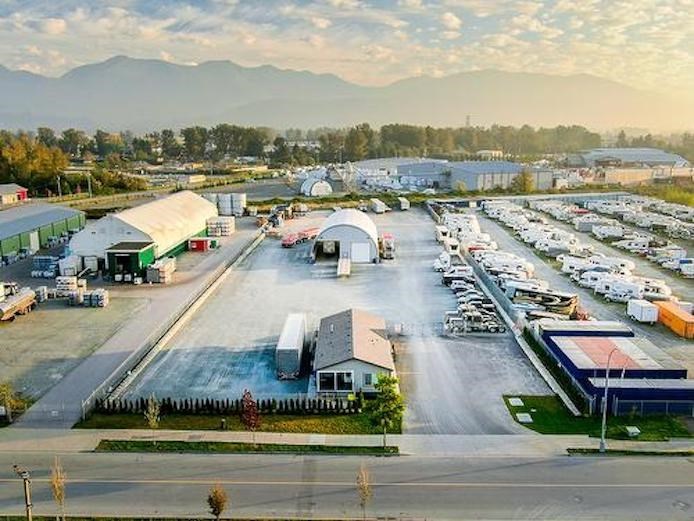Demand for Metro Vancouver industrial space has skyrocketed, and regulators need to find ways to streamline the application process for more space to be built, one industry official said.
Josh Gaglardi, principal at Surrey-based industrial/commercial construction firm Orion Construction, said the space shortage is so acute that industrial space developers and owner-users are looking well beyond their usual potential sites to secure what they need.
“We’ve seen major industrial business parks being proposed today that would not be considered feasibly even five, 10 years ago,” said Gaglardi, whose company’s major projects include the 428,000-square-foot Coastal Heights Distribution Centre and the 443,000-square-foot Pacific Corporate Centre.
“Being on the forefront of working on new greenfield and brownfield projects in the Lower Mainland, we see that there’s very little industrial land remaining, and it’s increasingly shrinking in both Metro Vancouver and the Fraser Valley,” Gaglardi said. “We’ve got mountains to the north, the border to the south and water to the west, so we continue to push east. But we are running out of industrial land opportunities, and the remaining sites are challenged by a myriad of limitations.”
Industrial land prices are rising quickly in the eastern Fraser Valley, however. Recently, a 2.5-acre Chilliwack brownfield site zoned industrial sold for $5.4 million, considered a record price for the community.
An Avison Young report from May showed Metro Vancouver’s industrial vacancy rate at 0.9 per cent, and the increased pace in development meant that 82 per cent of available land in 2015 is now being developed. Gaglardi added that while demand has been steadily increasing for years, that demand has spiked sharply in the last six to nine months. He attributed the demand surge to the meteoric rise of e-commerce and the increasing need for companies to have logistics space for storing goods and products.
Given the public’s adoption of e-commerce as the preferred way to do business post-COVID, Gaglardi noted the demand for Lower Mainland industrial space will continue to grow. That gives the province an opportunity to expand the economy coming out of the pandemic – or to let that economic benefit evaporate through inaction.
“Through the pandemic, people were forced to adopt new technology that maybe they wouldn’t have been so eager to learn otherwise,” Gaglardi said. “It has expedited what we see in light-industrial growth … and I think we will continue to see our industrial land demand driven by these e-commerce companies across multiple sectors.”
He added that companies have been looking at sites even with provincial or municipal requirements on stream-site setbacks, as well as those with challenging topography. That’s why, Gaglardi said, it’s crucial that municipalities and other government organizations free up the supply that is available in the market. Industry officials noted that projects often get bogged down at municipal levels, where staff shortages mean significant delays – even before the provincial regulators get involved.
Gaglardi said the biggest increases in application delays have been in Langley City, Langley Township and Abbotsford – places where most of the available industrial land is. These municipalities are therefore facing a double-whammy of higher volumes of applications and a dearth of staff to process those applications.
“That’s where the growth is happening,” Gaglardi said. “And some of these sites are increasingly moving closer to provincial water bodies, and a referral to the province can mean as much as a 12-month delay on these projects.
“We always try to push the municipalities and the provincial government to prioritize employment lands,” he added. “Our projects provide jobs and benefits to the economy, so we try to push those as high priority, even though it’s tough because housing supply is also so restricted. But we do provide a lot of benefits to local communities.… It’s just that industrial warehousing is, for the lack of a better term, not as sexy as residential. So we don’t see the priority we think we should see being placed on employment lands.”


